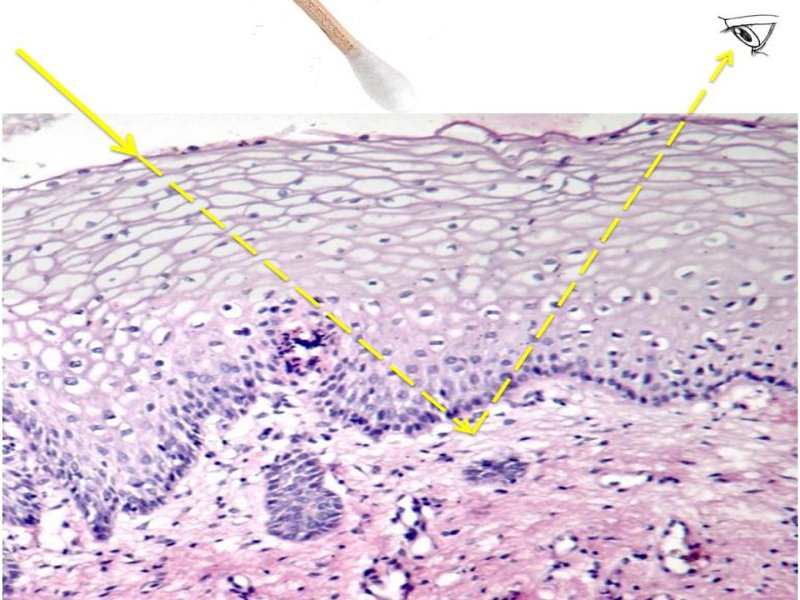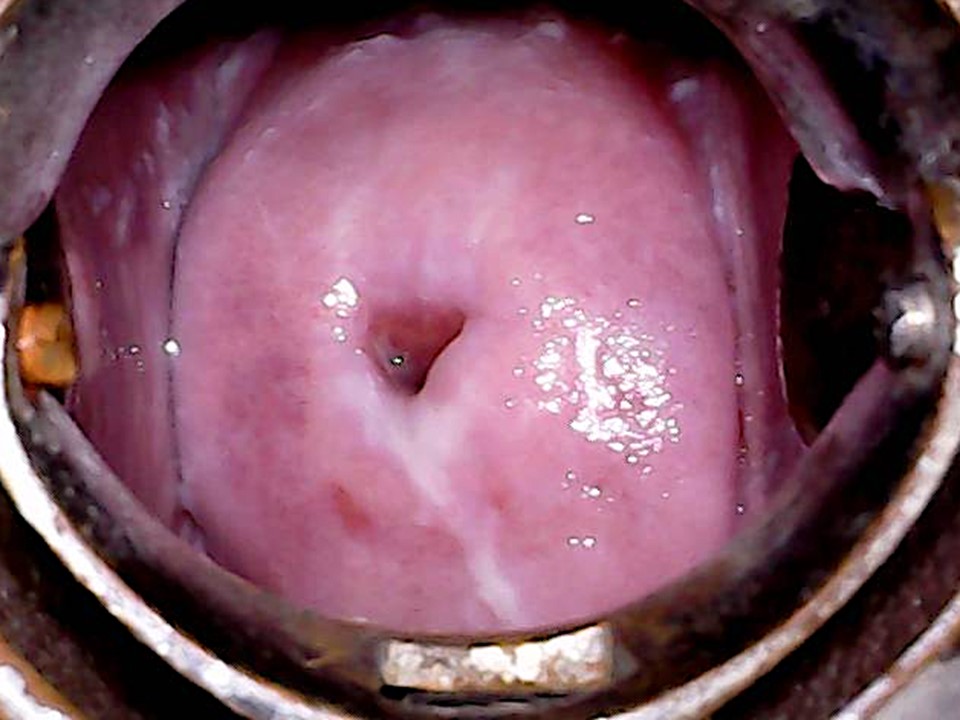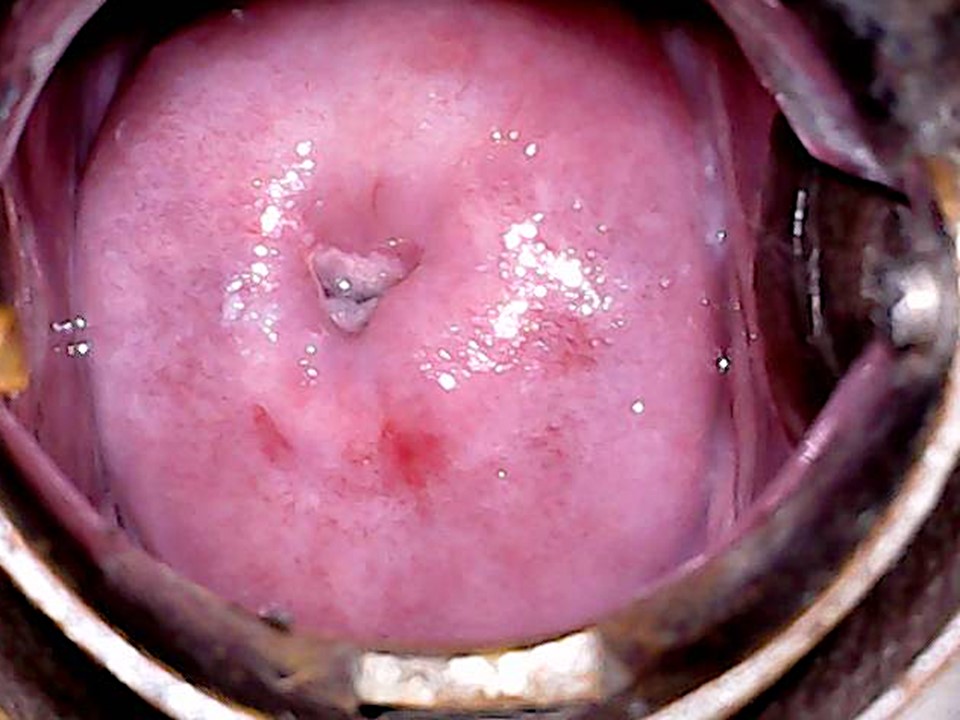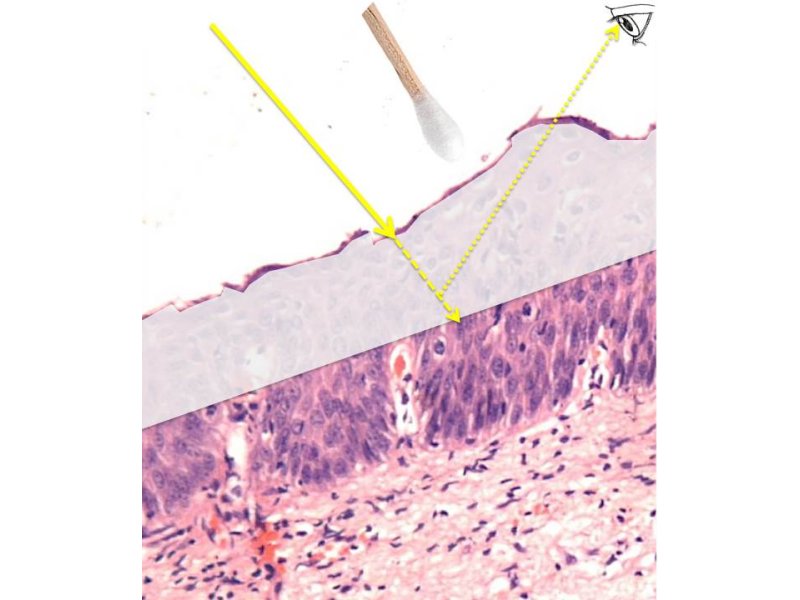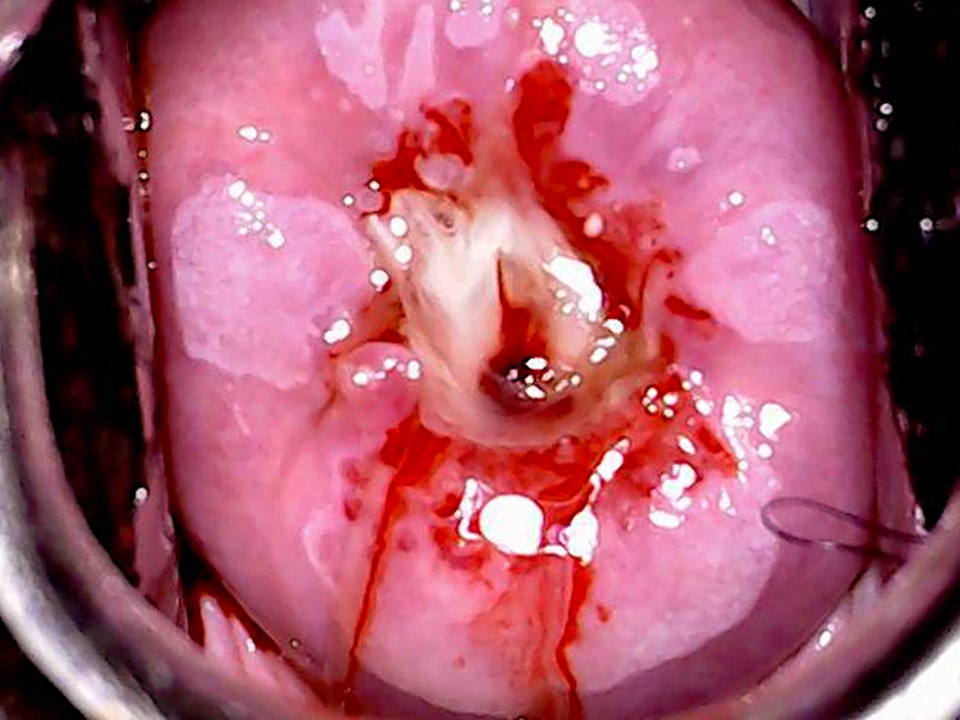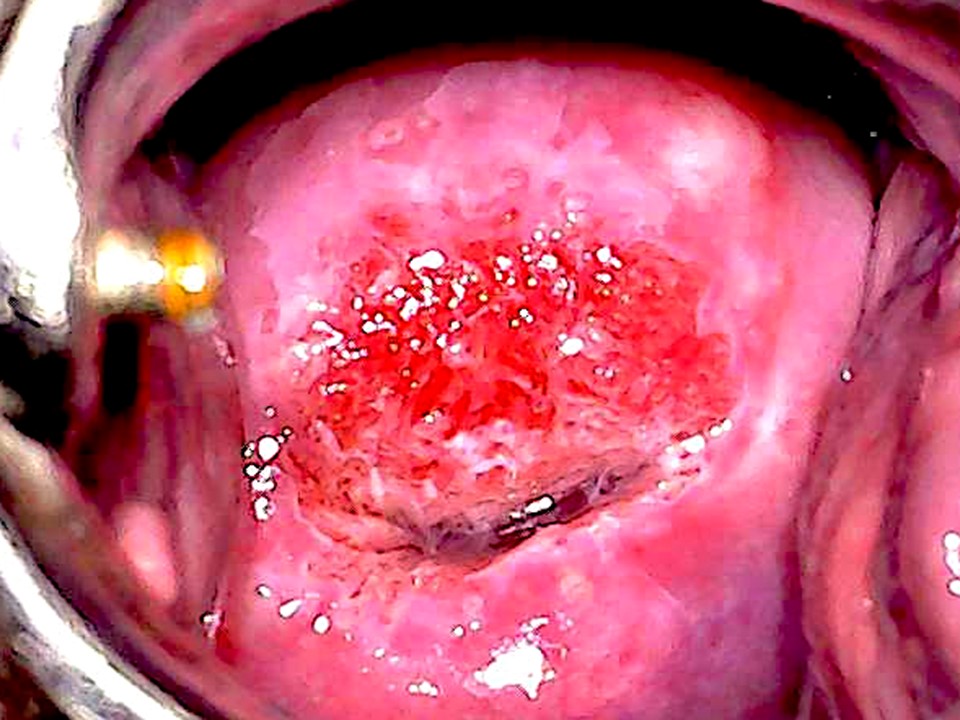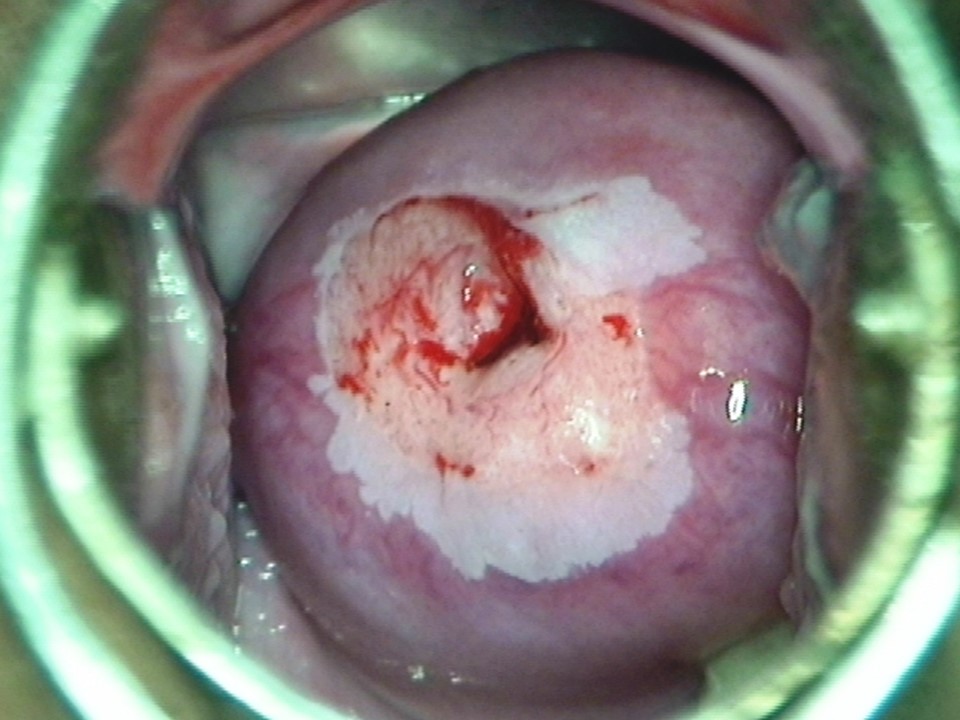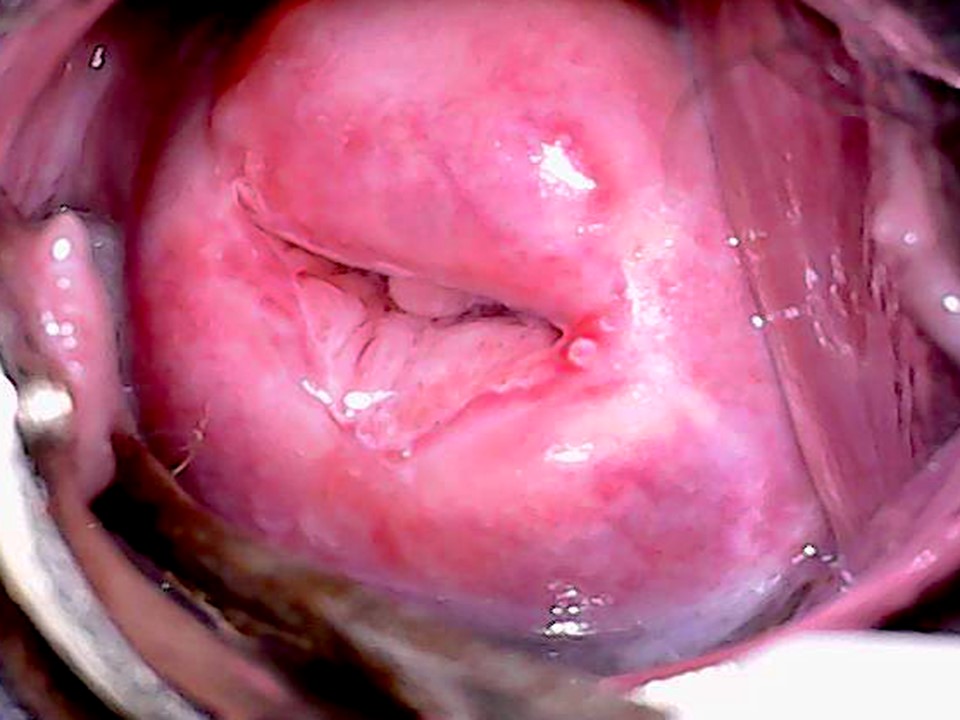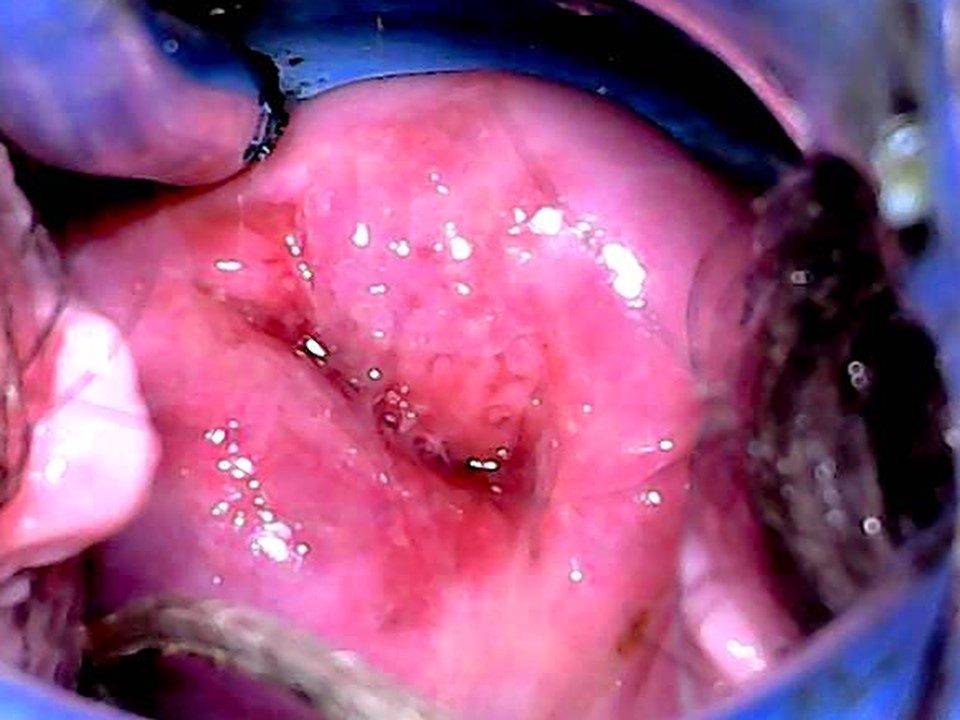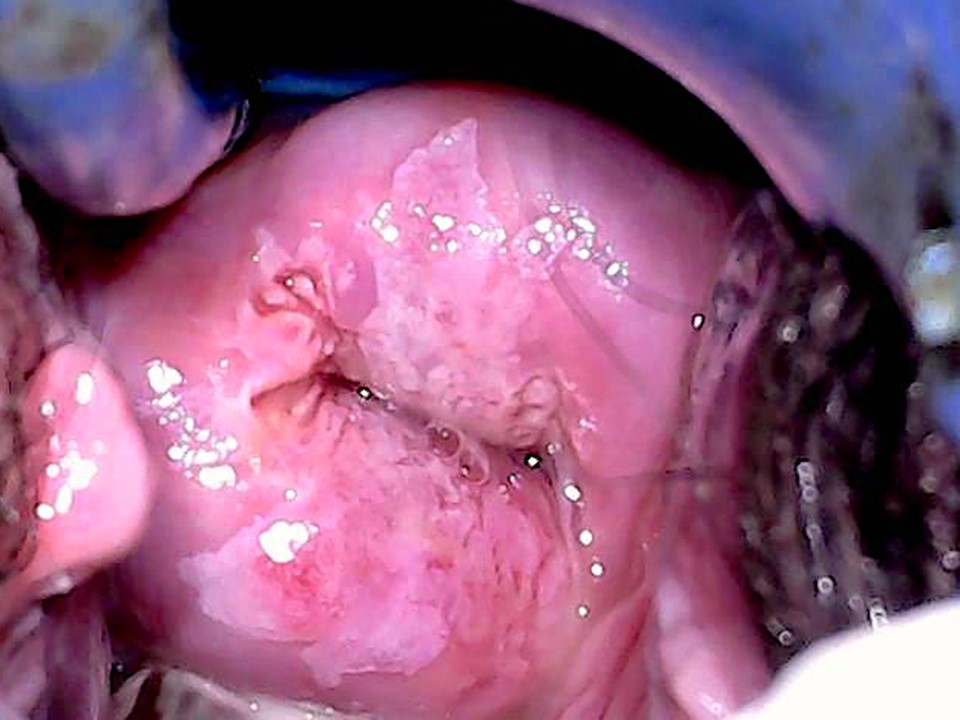A cervix with a precancerous lesion looks healthy to the naked eye. Even early invasive cancers are not easily recognizable with the naked eye. To make these neoplastic lesions visible, 3–5% acetic acid is liberally applied to the cervix for 1 minute. Neoplastic lesions on the ectocervix become visible as white patches after application of acetic acid. By detecting the white patches that appear after application of acetic acid and identifying certain characteristics, it is possible to detect cervical precancer and cancer. This is the basis of the VIA test, whether it is used as a primary screening test or as a triage test. Acetic acid also helps in determining eligibility for treatment, by making the SCJ much more easily recognizable and enabling the size of the lesion to be measured.
How does acetic acid change the colour of abnormal epithelium? Dilute acetic acid causes transient and reversible coagulation and precipitation of the cellular proteins of the cervical epithelium. Application of acetic acid also induces dehydration of the cells, resulting in the collapse of the cell membranes around the nucleus.
Normal cervical epithelium is transparent, but it appears pink because of reflection of light from the underlying stroma, which is rich in blood vessels. There is very little cellular protein in the superficial layers of the normal mature squamous epithelium (the nuclei are very small or absent, and the cytoplasm is replaced by glycogen). Thus, there is very little protein to coagulate when acetic acid is applied to normal epithelium, and the normal pink colour of the mature squamous epithelium remains unchanged.
Cervical epithelium with high-grade CIN or invasive cancer contains cells with large nuclei with abundant nuclear proteins. The rapidly proliferating cells do not accumulate glycogen, and they have intact cytoplasm. Acetic acid induces cellular dehydration and coagulation of the cellular proteins, causing the epithelium to appear white because light cannot pass through the layers of coagulated proteins. Coagulation of the protein contained in the neoplastic lesions makes the epithelium appear opaque white, and thus the lesions can be distinctly seen on naked-eye examination. This is the basis of the VIA test.
The density of the acetowhitening is directly proportional to the grade of the cellular abnormality. High-grade abnormalities (CIN2 or CIN3) have more cellular proteins and appear densely acetowhite. Most of the cells in a CIN1 lesion are normal, especially in the superficial and intermediate layers, and as a result the epithelium appears thinly acetowhite. Invasive cancers have a high amount of cellular protein, and the number of abnormal cells is also high; after application of acetic acid, they form a dense, chalky white plaque, which may be partially obliterated by bleeding on contact.
Identifying the SCJ and its localization is crucial to decide on the type of treatment. SCJ is much better visualized after application of acetic acid. Acetic acid cleans the mucus and causes the columnar epithelium to be oedematous (swollen) and prominent. The SCJ is often seen as a distinct white line after application of acetic acid.
|
